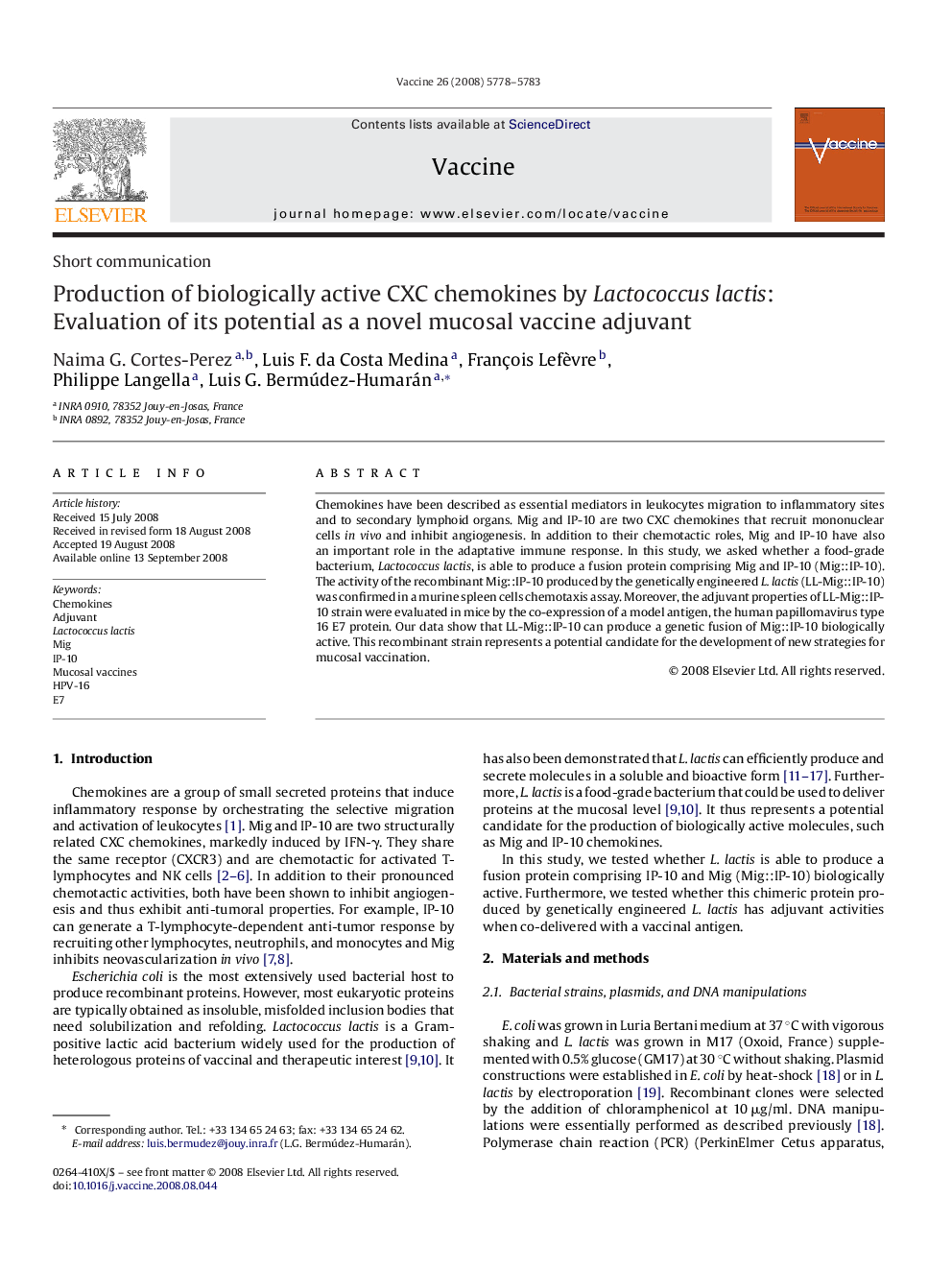| Article ID | Journal | Published Year | Pages | File Type |
|---|---|---|---|---|
| 2406654 | Vaccine | 2008 | 6 Pages |
Abstract
Chemokines have been described as essential mediators in leukocytes migration to inflammatory sites and to secondary lymphoid organs. Mig and IP-10 are two CXC chemokines that recruit mononuclear cells in vivo and inhibit angiogenesis. In addition to their chemotactic roles, Mig and IP-10 have also an important role in the adaptative immune response. In this study, we asked whether a food-grade bacterium, Lactococcus lactis, is able to produce a fusion protein comprising Mig and IP-10 (Mig::IP-10). The activity of the recombinant Mig::IP-10 produced by the genetically engineered L. lactis (LL-Mig::IP-10) was confirmed in a murine spleen cells chemotaxis assay. Moreover, the adjuvant properties of LL-Mig::IP-10 strain were evaluated in mice by the co-expression of a model antigen, the human papillomavirus type 16 E7 protein. Our data show that LL-Mig::IP-10 can produce a genetic fusion of Mig::IP-10 biologically active. This recombinant strain represents a potential candidate for the development of new strategies for mucosal vaccination.
Related Topics
Life Sciences
Immunology and Microbiology
Immunology
Authors
Naima G. Cortes-Perez, Luis F. da Costa Medina, François Lefèvre, Philippe Langella, Luis G. Bermúdez-Humarán,
